Cutting the Parkland Meadow
Once the last of the spring bulbs go to seed towards the end of June, it is time to cut the roughly two-foot-high grass in our 3-acre Parkland Meadow.
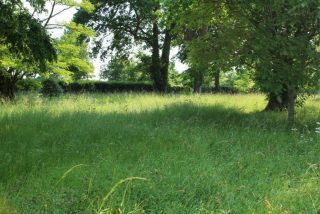
It is important to reduce wildflower meadows’ fertility by removing the cut grass. Normally, a bailer would be used for this job. However, the density of our parkland trees has forced our Grounds Manager Joe Humphrey to come up with an alternative solution so as not to have to rake the three acres manually! Mowing the Parkland Meadow is one of our biggest annual jobs: it demands a whole-team effort and lots of machinery.
The first step is flailing the grass. Joe prefers flailing to topping because the grass is chopped up in the process, letting it dry out more quickly. It also helps spreading the seeds. The flailing sadly had to be done on one of the hottest days of the year, but Joe managed to keep the sun at bay!
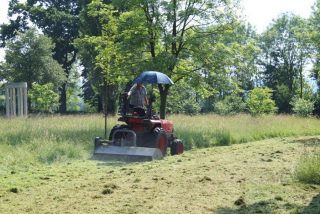
Once the grass has been cut, a strimmer is used to tidy extensive areas around trees and shrubs.
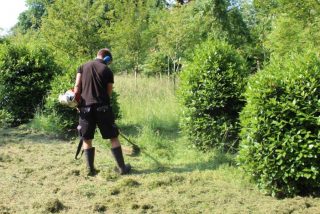
The cut grass is left to dry for a few days to reduce its volume before removal.
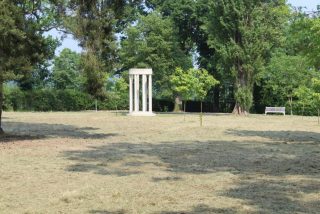
The grass is collected using an ‘Amazone’ – a huge mower. One load after another is painstakingly lifted onto a trailer.
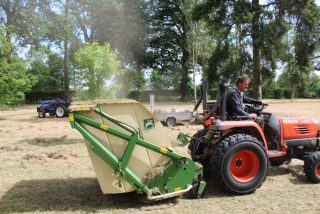
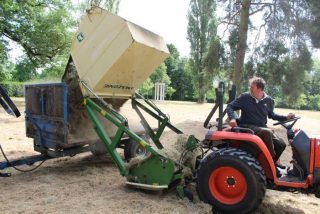
Two trailers are used alternately to expedite the grass’ transport to the compost. After a long, dusty day, the meadow is left bare and brown. With the help of a little rain, it will soon green up!
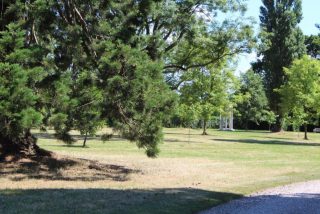
The meadow is mowed a second time before bulb planting commences at the start of October. Since there is usually little new growth, this can be done with the Amazone.
